|

|
|
Norman A. Grimsley "REB" - Sig
C Met Team member specializing in data interpretation at Dugway Proving
Ground. Reb was trained at the 905.1 surface observation school at
Fort Monmouth in New Jersey and was assigned to DPG from 1959 to 1961. Toward
the end of his tour of duty he was allotted to the test grids as a micro
meteorologist to gather data in support of the CBR warfare agent releases
to the open air. The Reb was the best roommate and friend one could have
and we shared a lot of good times that broke the monotony of a duty
station that should have been paying hazardous and isolation pay. |
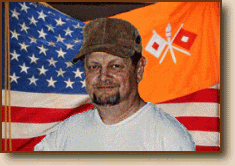 |


|
Zeniff Cox
briefed the attendees of the 6th Biological Safety Conference on September
13-16, 1960 at Fort Detrick on safe field test procedures for chemical and
biological warfare operations at Dugway Proving Ground, a challenging
task in the absence of accepted operational
standards. |
 |
 |
|
These DoD files and file remnants were given to
public access on the internet by the Clinton administration and then
withdrawn by the Bush bunch. I doubt that this was to conceal warfare
technology of the 50s and 60s but more likely to conceal the
effects of CBR atmospheric tests on veterans,
downwinders, and the environment. |


 |
-
-
- Cloud of secrecy
lifting on Dugway Navy's tests of germ and chemical agents in the
Pacific during the Vietnam war.
|
|
"The Deseret News and victim
groups have for years continually found pieces of the puzzle to what happened in such
tests - including at least 328 open-air germ tests at Dugway Proving Ground, the release
of 15,000 pounds of nerve agent at tests there and tests that intentionally exposed
soldiers to such weaponry." |
|
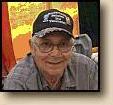 |
Jerrel Cook was stationed at Fort
Wainwright, Alaska (HHC 171st Inf Bde (M)) before going to Fort Greely to
participate in the ELK HUNT I testing. ELK HUNT I & II were
conducted near Fort Greely, Alaska during 1964 and 1965.
Jerrel is bringing attention to the land based
open-air testing of project 112/Shad with projects like his contribution
to
Operation Homecoming 2005
and the information webpage
Project 112 / Elk
Hunt I & II. |
|
Letters of
Appreciation from the Commanding General of the Desert Test Center to
soldiers who had no previous experience or training with the most
dangerous of the warfare nerve agents, training that would have probably
avoided health problems the veterans of ELK HUNT are having today. |
|
Army
Times staff writer Deborah Funk interviews "Jerrel Cook" veteran of
open-air VX warfare agent tests. |
|
Listen to Jerrel Cook Host the SVR
Broadcast on Stardust Radio March 29th at 5:30 PM to 6:30 PM CST. |

- "Dugway Proving Ground, a massive
firing range that for fifty years was the U.S. Army testing ground for
some of the most lethal chemical, biological, and nuclear weapons man
ever made.
|
 |
- A slope of the mountains to the east
is pockmarked with hundreds of fortified bunkers storing enough toxin to
eradicate mankind.
-
- This was where the Cold War was waged,
not on battlefields in foreign lands but in factories and laboratories
and testing ranges."
-
TONY FREEMANTLE / Houston Chronicle
|

|
|
|
The Tuite Reports
A recently uncovered
Army report from 1972 about the March 14,
968 chemical weapons test at Dugway
Proving Ground that went awry and
6,400 sheep keeled over in their
fields, |
-

|
-
suggests the sheep died from a lethal
combination of nerve-gas traces and pesticides.
-
- Gulf War veterans, who were exposed to
insecticides, oil-fire smoke and possibly chemical agents as the Iraqi
stockpile was blown up, are suffering from chronic ailments similar to
those found near Dugway Proving Ground.
- "Does
low-level exposure to nerve agent amount to
overexposure to pesticides? Basically, all we know is that
a certain percentage of people subjected to these substances have
health problems."
Jim Tuite, a researcher with the
Chronic Illness Research Foundation. |

 |
-
- Dugway
Dirty Bombs
|
- In 1959 the USAF tried to assess the hazards
from a reactor meltdown in a nuclear-powered aircraft at Dugway Proving Ground. They
did not try to assess the heath hazards created for Utahans by sending clouds of radiation
toward highway U.S. 40 (now Interstate 80) and the communities of Wendover and
Knolls.
|
- The testing between
1949 and 1953 at Dugway was a full-scale radiological warfare program that released more
than 153,000 curies of radioactive products produced from a atomic pile for the purpose of
killing man, animals and plants.
|
- The use of various radioactive
materials on the test grids included tantalum. Among the the common radioactive material
of the day, only plutonium was more dangerous. Tantalum 182 was more cancer-causing than
such elements as cesium and strontium 90. It was hot stuff, with acceptable exposure of
just 7 microcuries.
|
|
Once major hostilities had ended in Korea in January
of 1953, the 2nd Chemical Battalion was redesignated as
Headquarters and Headquarters Detachment, and restationed at Dugway
Proving Ground, Utah. Although not noted in the
Battalion
History this was a significant Cold War deployment for the atmospheric
testing of chemical, biological and a radiological warfare agents. Kenneth
Nolte (pictured at right) was a weather observer with the 2nd
Chemical Battalion who's duties placed him on the radioactive dust swept
test grids of Dugway. His life was cut short as a result of exposure to
those tests in August 1967. |
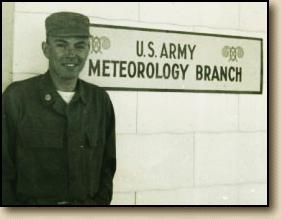 |
|
|
|
Report of Field Test 291: The
real ramifications of wide spread radiological contamination from a "Dirty
Bomb" detonation as recorded at Dugway Proving Ground or how to
remove 8" of dirt. |

|
1954 Report indicates the extent of US Navy and USAF involvement in
the testing at Dugway. |
 |
|
The DS2 Decontaminant Debacle:
Its toxic and highly corrosive properties can cause severe chemical
burns; stricture of the esophagus; damage to the liver, the cornea of
the eye, and the central nervous system.
|
|
-
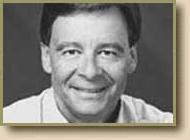
- Ken Verdoia is the senior producer of
public affairs for KUED Channel 7
|
"If we take it up north to Dugway Proving Grounds
and Tooele Army Depot you find people in a fierce sense of loyalty and
attachment to those locations for two reasons. First they believe they
were truly engaged in serving the national defense. Secondly, all
employees at the Dugway Proving Grounds work under a code of assured
non-compliance with inquiries, and what that means is, you work here, what
you do here stays here, or you run the risk of termination, loss of
benefits, loss of health care, and therefore you don't hear a lot of
whistle blowing. One or two isolated instances but you don't hear a lot of
whistle blowing going on about what has taken place there over the years.
You have kind of a mixed bag. It's a very problematic, very troubled
aspect of the history of this region, and what's most compelling is that
we still are not fully up to speed on what's taken place in our back yard
in the name of national defense."
|

|
-
-
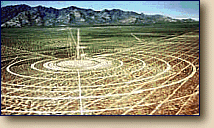
|
-
Could this program have a spooky side?
-
-

-
-
-
-
-
- Could it be a loaded gun?
|

|
 |
|
The Army's
Incapacitating Agent Tests in the Cold War Era |
|
In 1952, the Army Chemical
Corps began a classified medical research program for developing
incapacitating agents that continued until 1975. This program involved
testing chemicals, including nerve agents, nerve agent antidotes,
psychochemicals, irritants, and vesicant agents. The chemicals were given
to volunteer service members at Edgewood Arsenal, Maryland; Dugway Proving
Ground, Utah; and Fort Benning, Bragg, and McClellan. In total, Army
documents identify 7,120 Army and Air Force personnel who participated in
these tests. The Army's Medical Research and Development Command in Fort
Detrick, Maryland, has the names and service numbers of all test
participants and listings of the chemicals to which the service members
were exposed.
GAO/NSIAD-93-89 Military Human Experiments
|
| Camp
LeJeune, NC |
Dugway Proving Ground, UT |
|
Naval Research Laboratory,
Washington, DC |
Naval Training Center, Great
Lakes, IL |
| Gulfport, MS |
Camp Polk, LA |
| El Centro, CA |
Edgewood Arsenal, MD |
| Fort
Richardson, AK |
Bushnell Field, FL |
| Fort
Detrick, MD |
Fort Pierce, FL |
| Fort
Benning, GA |
San Jose Island, Panama Canal Zone |
| Fort
Bragg, NC |
Fort Leavenworth, KS |
| Camp
Sibert, AL |
U. S. Navy, Harts Island, NY |
- Fort
McLellan, AL
|
-
Camp Bullis, TX
|
|
Memo regarding
possible lethal dosage of BZ agent on human volunteers.
|
|
Memorandum
from the Army Chief of Staff to the Surgeon General outlining the use of Volunteers
for research with atomic, biological and chemical warfare agents. |
|
Wilson Memorandum - Adopted
after years of debate by the medical and scientific community with the Department of
Defense. |
| New and fruitful approaches
for BW and CW human experimentation? |
|
|
BATTELLE
EDGEWOOD OPERATIONS
The data sheets of "Disclosed Agent Events" were
provided by Battelle Edgwood Operations.
Colonel Weiner, Battelle
Program Manager for the Edgewood office, has not responded to a written
request to provide the missing information on the sheets they sent. The
data that was very surprisingly released is probably just the tip of the
iceberg of chemical and biological exposure problems of personnel working
with CBR agents. |
 |

|
An outbreak of Venezuelan Equine Encephalitis (VEE)
occurred in a unit of military personnel who had gone to Panama
for jungle |
 |
|
training in 1981. Exposure was linked
to training in a previously implicated area of Fort Sherman.
|
| |
|

|
 |
Before "Whistle Down,"
(Dec. 1962 - Feb. 1963) which was the first nerve gas test in
Alaska that the DoD has admitted took
place, there was the open-air testing of VX at
Gerstle River by the Chemical Arctic Test Activity. The tests were manned by Chemical Corps
troops with Signal Corps
meteorological personnel and directed from/by Dugway Proving Ground which
the Chemical Corps had made responsible for the atmospheric testing of all CBR warfare agents. The pictures provided
of the test site were taken in the spring of
1960. |

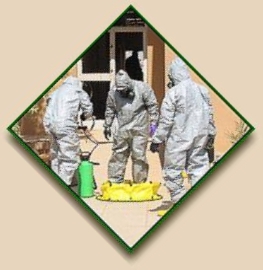 |
Website Home of
the 20th Support Command (Chemical,
Biological, Radiological,
Nuclear and High Yield Explosives)
a fairly new asset of the U.S. Army Forces Command. Prior to the
establishment of this Command (CBRNE), the Army
had no single organization to effectively train, integrate, coordinate,
deploy, and manage its specialized CBRNE technical assets.
Will this be the next
generation of CBR servicemen to get swept under the Pentagon rug?
According to veterans like
Jerrel Cook fighting for recognition of past CBR exposures, "It would be a
good idea for modern day soldiers to keep a diary of events, retain
copies of all orders, and keep track of service friends that can provide
buddy verification." |
|
- The testing of chemical,
biological, radiological, and exotic agents by the DOD and the CIA might have been
credible under the guise of national security.
|
- The way the veteran and
civilian victims have been treated is unconscionable.
|
|
- Intimidation of
physicians; "I thought I
had found a M.D. in Salt Lake City but when he heard I was exposed at Dugway he backed
off. He was harassed by the DOD when he treated civilians from Dugway! He wanted no part
of me." says Dugway survivor.
|
 Does the VA claim it has no knowledge of your chemical
or biological exposure?
Does the VA claim it has no knowledge of your chemical
or biological exposure?
|
|
GAO-04-410: If you think the DoD is actively seeking to
identify veterans and units that may have been exposed to chemical or
biological agents other than on Project 112, (such as normal test
operations at Dugway Proving Ground) call 1 800 497 6261.
It's business as usual. You have to provide the evidence that you were
at a test site despite what you may have assumed from the perceived
initiative of the document.
The Canadian Government (www.forces.gc.ca)
has recognized its veterans involved in chemical-warfare agent experiments
between the 1940s and the 1970s. It might be a little late for most of
them but a lot more than our exposed veterans will ever get.
|

 |
| |
|
 |
| |
|
Environmental consultant
is pictured collecting animal specimens for contaminant analysis and
ecological risk assessment at the U.S. Army Dugway Proving Ground in Utah.
The respirator mask is being worn as a precaution against the deer mouse
that carry the Hanta virus. |
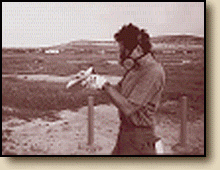 |
| |
 |
The Top Secret development of small arms
biological weapons, including the spore-forming bacteria that causes
anthrax, an acute infectious disease, was carried out at Dugway in 1960.
The test area for the anthrax shot was expected to be contaminated for
months. However, it was found that in soil such as the
salt flats, survival persisted beyond three years and that
salts with other chemicals in the soil enhanced the infectivity of
Bacillus anthracis spores. |

 |
|
|
Documented Nerve Gas Exposures
at Dugway Proving Ground, 1953-1954 |
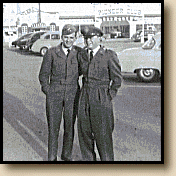 |
Former DPG assigned Air Force officer
"Jack Gibson" Provides Documentation Source for Exposure Victims
Veterans and civilians who served at Dugway Proving
Ground may need this documentation to prove that nerve gas exposures
actually occurred in the 1953-1954 period. |
- Frank Cesta and Jack Gibson
- in Las Vegas in Febuary
1953
|
1st Lt. John D S Gibson, USAF was the
coauthor to "Report of Mild Exposure to GB in 21 Persons," dated March 19,
1954 by Capt James F. Gammill, USA MC and Capt Eugene Cutuly, USA MC. |








|